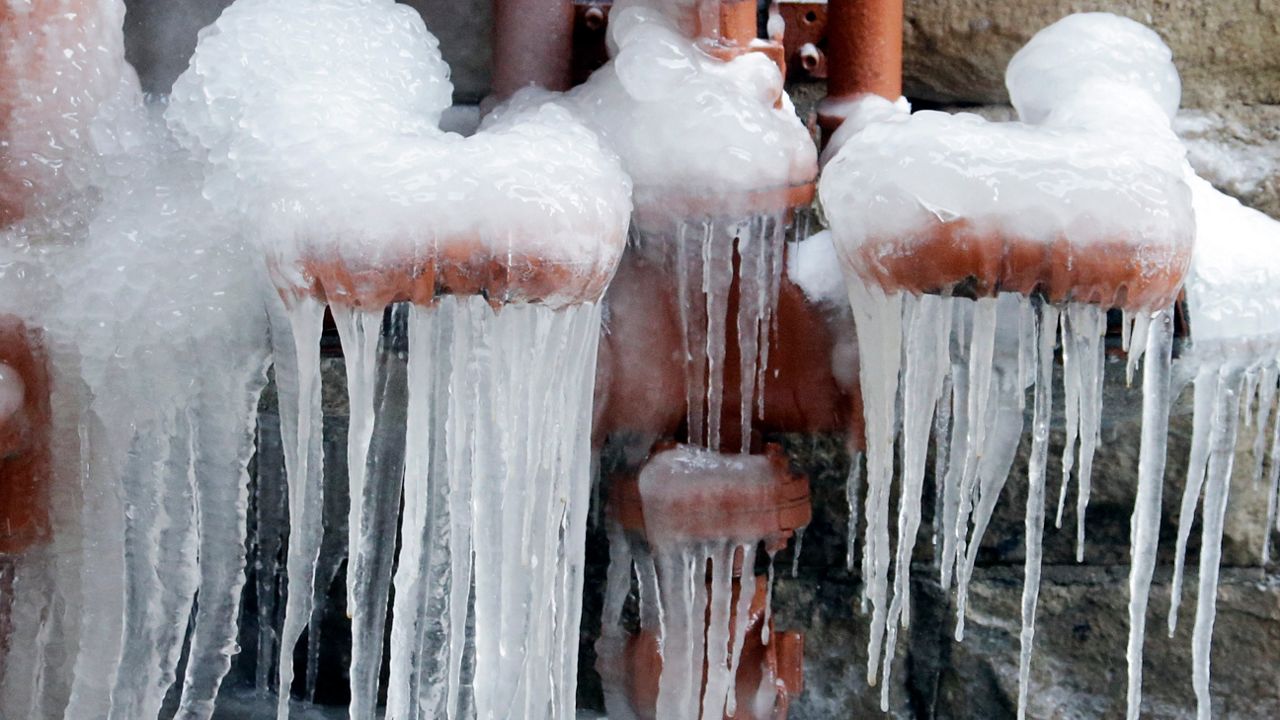CLEVELAND — With repeat periods of below-freezing weather, it's possible for pipes to freeze.
The City of Toledo and AAA has these tips to help prevent it from happening to avoid unnecessary expenses and repairs, as well as to help keep the water running.
- Make sure windows and doors are tightly closed
- Fill in cracks around windows and in walls
- To help warm air circulate, open the door to where the pipes are located
- Never use open flames to keep pipes warm; instead, put a lighted bulb near them
- Use insulation or heat tape to wrap pipes to keep them warm
- Allow warm air to reach pipes by opening the cabinet door below the sink
- Make sure to turn off water to the garden hose connections and also drain the exposed piping
- Check for cracks in the outdoor meter cover and that it fits properly to avoid cold air getting in
- Flowing water can help break up ice
- Remember it's less expensive to regularly run faucets in below-freezing temperatures than to repair a frozen or burst pipe
- If no water comes out, it's possible the pipes near a wall, door or window are frozen
- Start by opening the faucet near the frozen pipe — this will release vapor from the melting ice
- Then start warming the pipes near the faucet, working toward the frozen section (this can be done by using a hair dryer)
- Once water starts flowing again, allow a pencil-sized stream of water flow through the faucet
- Odd smells from a faucet or drain, which could mean it’s partially or completely blocked
- Little to no water is coming out from a faucet
- You can see frost or condensation on the exterior of the pipes
- You touch the pipe and notice a spot that feels colder than the rest



